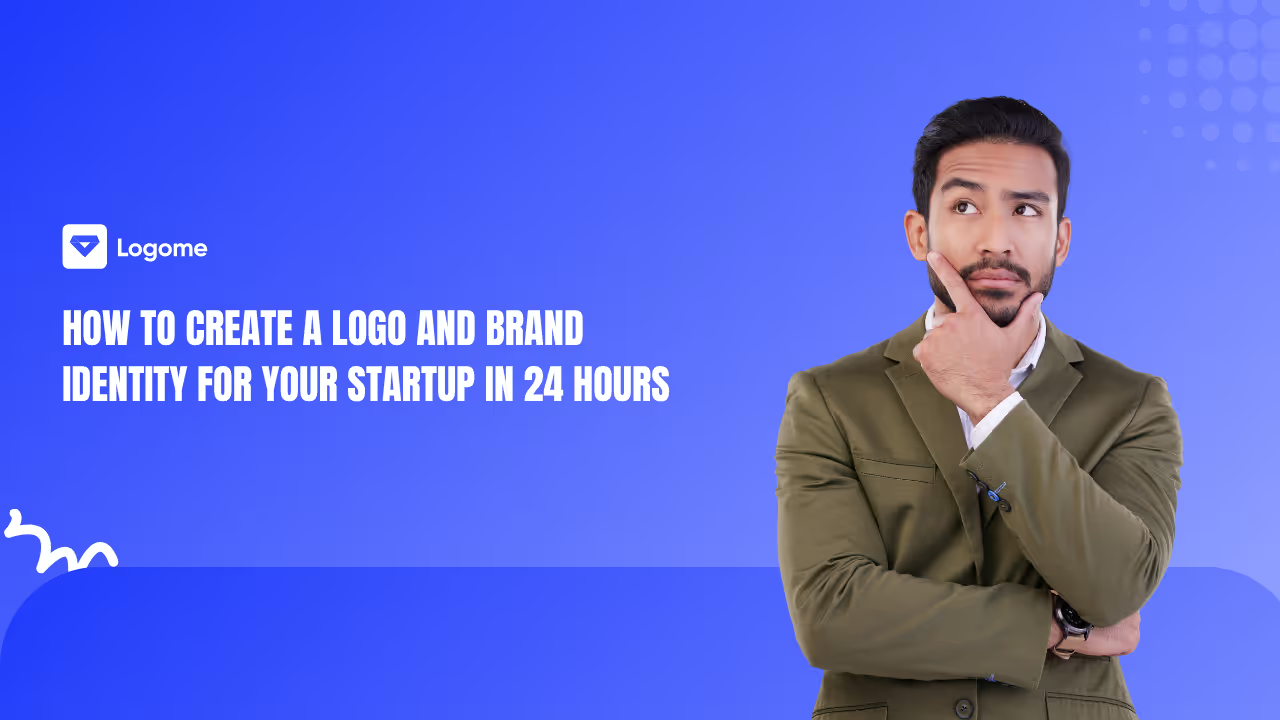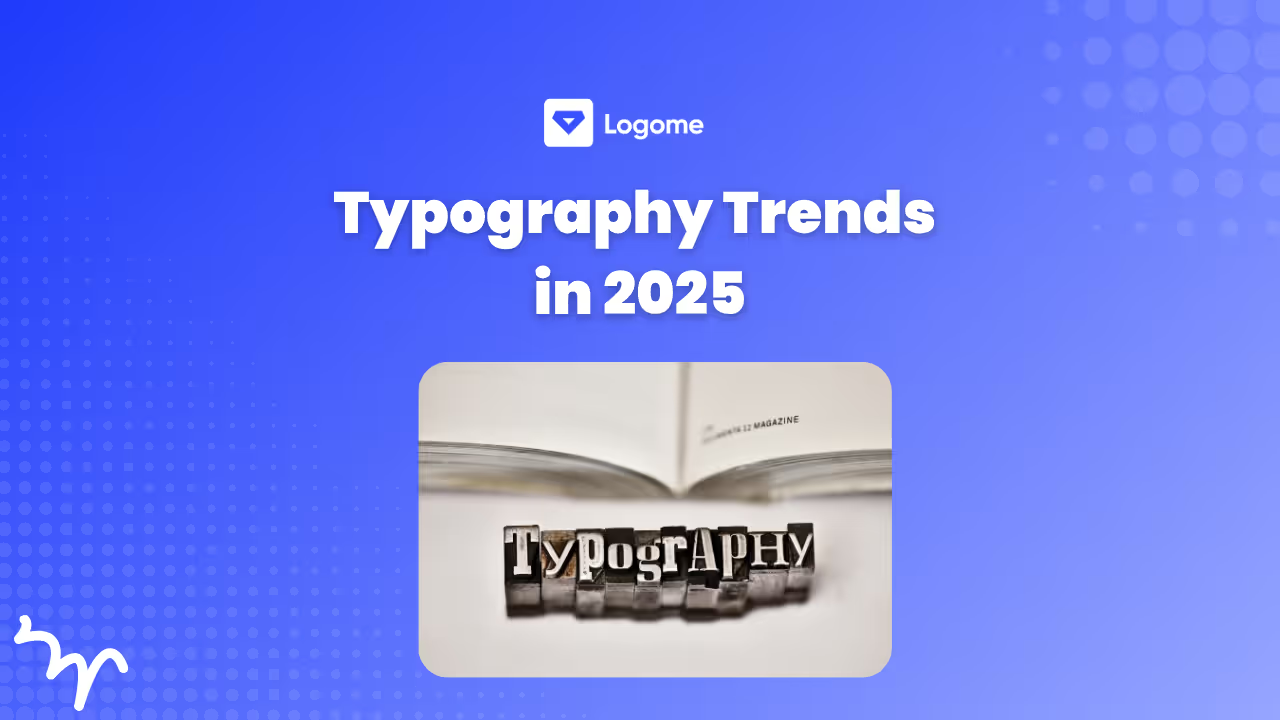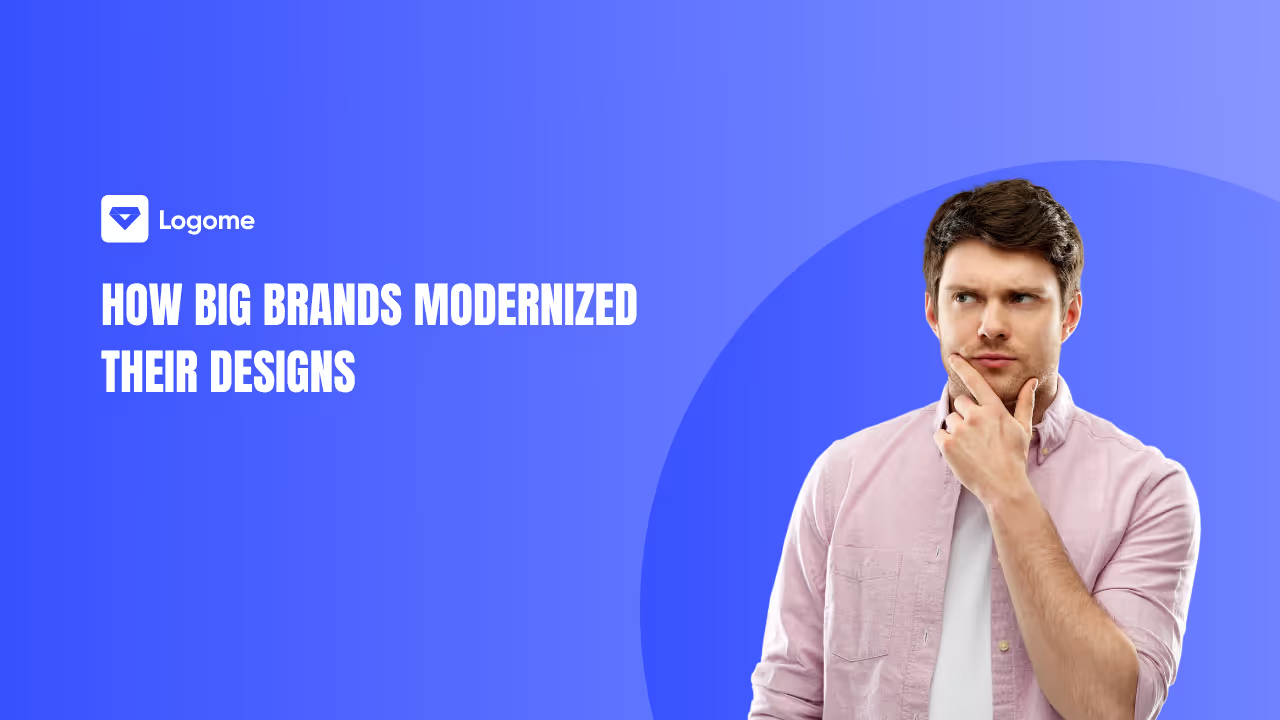How to Create a Logo and Brand Identity for Your Startup in 24 Hours
Learn how to create your startup logo and brand identity in just 24 hours with actionable steps, practical tools, and design strategies that make your brand stand out fast.
Learn how to create your startup logo and brand identity in just 24 hours with actionable steps, practical tools, and design strategies that make your brand stand out fast.

Starting a business is exciting—but let’s be honest, it’s also chaos. Between product planning, funding, and marketing, designing your startup logo design and brand identity can feel like something you’ll “get to later.” The truth? You can build a professional, memorable brand in just 24 hours if you know what to focus on.
Creating a logo and identity isn’t just about making something look pretty—it’s about capturing your brand’s personality so people instantly get what you stand for. This guide walks you through a realistic, hour-by-hour process to build your startup’s visual foundation fast. You’ll learn how to brainstorm, design, validate, and launch your brand—all in one productive day.
Whether you’re bootstrapping or just impatient to get your startup live, this process is designed to give you results that look polished and feel authentic, without needing months of design back-and-forth.
Most startup founders think branding takes weeks of strategy meetings and endless revisions. But if you approach it like a sprint—with focus, clarity, and the right tools—you can create something powerful in just one day. This section breaks down what you’ll actually complete within 24 hours and why this condensed process works surprisingly well.
By the end of your 24-hour brand sprint, you won’t just have a logo—you’ll have a mini ecosystem that tells your story visually and verbally. Expect to walk away with:
Each deliverable plays a key role in helping your startup look credible from day one, giving you the foundation you need to pitch investors, attract customers, and build trust fast.
Here’s the secret: great branding isn’t about spending months debating colors—it’s about making focused decisions. By limiting yourself to 24 hours, you eliminate overthinking and get to the heart of what your brand stands for.
This sprint-style approach forces clarity. You learn to trust instinct, focus on essentials, and keep moving forward. The result? A brand that’s lean, cohesive, and launch-ready—not one stuck in endless iterations.
Now that you know what you’re building, it’s time to move fast and make it real. This is where your ideas take shape—structured, decisive, and guided by purpose. Every block of time has a clear outcome, so by the end of 24 hours, you’ll have a complete visual identity that actually works.
Start by reviewing your one-page brand brief. Confirm your target audience, your promise, and the emotional tone you want your brand to evoke. These insights will guide every design decision ahead. Think of it as the guardrail that keeps you from drifting into trends that don’t represent you.
Open your sketchbook or digital canvas and create quick variations—no overthinking. Mix styles: some type-based, some icon-led, some hybrid. Focus on clarity and recognizability. Test each version at small sizes; if it doesn’t hold up as a favicon, it won’t scale well on screens.
Color is emotion in visual form. Start with one dominant color that mirrors your brand’s energy, then add a complementary shade and a few neutrals. Test combinations against white and dark backgrounds to make sure they pop without losing harmony.
Choose one primary font for headlines and a secondary for body text. Keep legibility as your north star. Use tools like Google Fonts or Adobe Fonts to experiment quickly. Check that your chosen pair looks balanced in both large and small text.
From your logo sketches, pick the strongest direction. Refine spacing, balance, and proportion. Create three consistent versions: a full logo, a compact version, and an icon. Each should work independently and together to form a flexible visual system.
Show your top two options to a few unbiased eyes—friends, peers, or online communities. Ask what they remember after five seconds, not what they like. The goal is recognizability, not popularity. Choose the design people identify fastest and most accurately.
Document how to use your new logo. Define clearspace, minimum size, and incorrect uses. This isn’t about design rules for designers—it’s about preserving visual consistency as your startup grows.
List your color palette with HEX, RGB, and CMYK codes. Add typography details—font names, weights, and usage notes. Include a few tone guidelines, like how formal or playful your brand’s messaging should sound.
Prepare all your visual assets. Export your logo in SVG, PNG, and PDF at multiple sizes. Create social media banners, favicons, and app icons. Proper exports make your brand instantly usable across platforms.
Test your identity in real-world settings. Drop your logo on a landing page mockup, business card, or product packaging. You’ll instantly see what works—and what doesn’t—when your brand meets reality.
Your brand voice should feel human and consistent. Write a short tagline, a one-line value statement, and three key phrases you can reuse on your website, emails, and social posts. Keep it simple, direct, and aligned with your earlier brief.
Run quick accessibility checks. Test contrast ratios using online tools and confirm your colors meet visibility standards. Make sure your logo is legible in grayscale and readable in both light and dark mode settings.
Create ready-to-go materials: six social media posts, one email header, and a simple press kit. Use your new logo, fonts, and colors consistently to maintain coherence from day one.
Check your fonts, icons, and images for commercial licenses. Add ™ next to your brand name, and reserve ® for after registration. Save your rights and license files in one folder for easy reference later.
Organize your brand assets. Create a clear folder structure with subfolders like “logos,” “social,” “guidelines,” and “exports.” Add a short README file explaining what each folder contains.
Replace placeholder logos on your website, update social media headers, and add your new identity to emails and documents. Announce your launch confidently—your brand is ready for the world.
Tools make or break a one-day brand sprint. The trick isn’t using all of them—it’s choosing the right ones at the right time. Here’s a curated stack that fits your 24-hour timeline perfectly, helping you move fast without losing quality or originality.
Start simple. Use Google Docs or Notion to create your one-page brand brief. These tools let you outline your mission, target audience, and tone of voice quickly. If you’re working with a co-founder or small team, they make real-time collaboration easy, ensuring everyone is aligned before you dive into design.
When time is tight, speed and flexibility matter. Tools like Logome can help you generate professional logo concepts in minutes. It’s ideal for founders who want quick, quality visuals without spending hours on Illustrator.
Unlike most AI-based generators, Logome lets you explore variations that actually feel custom—so you get a strong starting point without generic results. From there, you can refine your chosen design or export it directly into your brand assets.
Other quick helpers include Canva, Adobe Express, and Brandmark, which are great for testing layouts and styles. However, make sure to refine the final version manually or with a designer’s eye to ensure uniqueness and scalability.
AI-powered tools can speed up brainstorming, color palette selection, and content creation. Platforms like Khroma for color matching or ChatGPT for tone guidelines can save hours. But remember—AI should assist, not decide. Use it to spark ideas, not define your brand’s essence.
Validation keeps your design grounded. Use Contrast Checker for accessibility compliance, Favicon.io to test visibility at small sizes, and Google Forms or Slack polls for quick feedback loops. Keep results documented to track how real users respond to your visual identity.
The fastest way to ruin your branding is to look like everyone else. Many logo makers reuse similar templates, which can lead to trademark conflicts down the line. Always tweak AI-generated results—adjust colors, refine shapes, and modify typography until it feels truly yours.
With the right tool stack—and a bit of human touch—you can create a brand that’s not just quick to make but built to last. Next, we’ll explore the core design principles that make your visuals stand out under pressure.
Fast design doesn’t mean careless design. Even in a 24-hour sprint, the right principles can help you create something timeless, scalable, and professional. These fundamentals ensure your brand identity looks confident—whether it’s on a billboard, business card, or phone screen.
The best startup logos are simple enough to be remembered yet distinctive enough to stand out. Think of brands like Stripe or Dropbox—minimal, flexible, and immediately recognizable.
Avoid overly detailed graphics or complex gradients. Your logo should still look clear when reduced to 16 pixels for a favicon or printed in black and white on an invoice. Test it across different mediums: screens, printouts, and even small merchandise.
If your mark fails to stay legible in those formats, simplify. Fewer elements mean more strength.
Typography carries personality. A sharp sans-serif might feel modern and bold, while a soft serif brings warmth and trust. The key is balance—choose fonts that pair naturally and complement your message.
Ensure the typeface is easy to read at both small and large sizes. Always check for weight variations (thin, regular, bold) so you have flexibility for future applications. Avoid free fonts that lack licensing clarity; invest in something reliable and scalable.
Color decisions go deeper than personal preference. They shape how people perceive your brand at a glance. A financial startup might lean into navy for stability, while a creative brand could embrace bright hues to signal innovation.
Pick one dominant color, one secondary, and a neutral. Use online tools like Khroma or Coolors to test combinations quickly. Then check for accessibility contrast to ensure your design remains inclusive and readable.
Keep in mind that color feels different across screens—test your palette on both mobile and desktop before finalizing it.
Strong design principles aren’t about restraint—they’re about focus. By keeping things simple, legible, and purposeful, your brand remains clear under any condition and any level of pressure.
Once your visuals are in place, it’s time to document them—quickly but clearly. A mini brand guide ensures your startup maintains consistency, even when multiple people start using the assets. In a single glance, anyone should know how to apply your logo, colors, and fonts correctly.
The first page defines your core visual identity. Start with your primary logo, then show your secondary and icon-only versions. Add clear rules for:
This helps preserve your brand’s integrity when assets are shared with partners, designers, or agencies.
The second page brings your brand to life. List your color palette with HEX, RGB, and CMYK codes. Include your font stack, specifying weights and where to use each (e.g., bold for headlines, regular for body text).
Add a section on brand voice—a few sentences describing your tone. Are you friendly and casual? Authoritative and confident? These notes keep your content sounding like you, no matter who’s writing it.
Finish this page with two quick application examples—a social media post and an email header. They help visualize how your logo, color, and tone come together in real contexts.
Before you close your design tools, create an export matrix—a list of every file type and size you’ll need. For example:
Organize them with clear names like logo_primary_color.svg or header_banner_1200x628.png. Proper naming saves hours later when you’re uploading to websites or sharing with collaborators.
Your two-page guide doesn’t have to be flashy—it just needs to be functional. Think of it as your brand’s quick-start manual: simple, direct, and ready to grow with you.
Creating your startup’s brand identity in 24 hours isn’t about cutting corners—it’s about cutting through noise. You’ve built a logo, color palette, and voice that reflect who you are, not just what you sell. That focus is what makes fast branding powerful.
If you used Logome during your sprint, you’ve already seen how effortless great logo creation can be when guided by clarity. Keep refining your visuals, testing them in real-world use, and listening to audience feedback.
Your brand is now live—authentic, functional, and ready to evolve as your startup grows.
Start with a one-page brand brief, sketch a few logo directions, and test them at small sizes for clarity. You can use a logo maker for quick ideas, but refine the final version manually to ensure it’s unique and reflective of your brand’s tone.
Costs can range from free DIY tools to a few hundred dollars for professional input. For a 24-hour sprint, use a logo generator for concepts, then refine the chosen design yourself or with light designer feedback to save time and money.
A great logo is simple, scalable, and memorable. It should be recognizable in color or black and white, readable on mobile screens, and distinct from competitors. Focus on clarity and purpose rather than design trends.
Use AI or logo makers to create initial options quickly, then apply your judgment to refine shapes, fonts, and spacing. This combination gives you both speed and originality without compromising quality.
Export your logo in SVG or PDF for scalability, and PNG for everyday use online. Include multiple sizes for web, social, and print—plus favicons (16px, 32px, 48px)—so your brand looks consistent everywhere.



Discover how 500,000+ businesses and creators are using our AI logo maker in their Logo creation.



